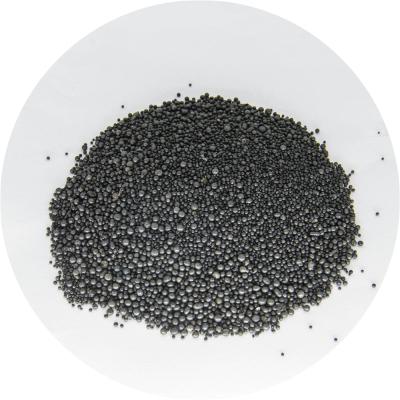Ceramic Sand vs Silica Sand
The Ceramic sand (Also called Ceramsite sand) shell molding process mainly uses the coated sand with the Ceramic sand as the original sand. The shell molding process is a special casting process in which the sand shell is poured by the core shooting machine. Let’s find out what advantages Ceramic sand VS Silica Sand.
Refractoriness of Ceramic sand VS Silica Sand
The refractoriness of Ceramic sand is above 1800 centigrade, and the refractoriness of silica sand is generally around 1600 centigrade. Especially in casting of stainless steel, high-alloy steel, and heat-resistant steel, and other materials with high angular temperature. The advantages of using ceramic sand are very obvious. It can effectively reduce sand sticking and other defects caused by insufficient refractoriness of molding sand.
The high refractoriness of Ceramic sand allows the sand mold to be non-sticky without painting refractory coating. That ensures the air permeability of the molding sand and saves the cost of coating and labor cost for the process.
The amount of added resin & the amount of gas generated by the coated sand
The sand shape of Ceramic sand is spherical. When the coated sand is hardened, molding sands are bonding point to point. While the bonding of silica sand coated sand is side by sideway. The strength of the sand mold can increase more than 100% comparing side by side bonded silica sand with the same consumption of resin.
In the same way, if we want to get the same sand strength adopting the two kinds of sands. The amount of resin added in the coated sand of Ceramic sand can be reduced by at least 30%-40%, and the amount of gas generated by the molding sand can be reduced by at least half (the new silica sand itself will also generate a certain amount of gas during casting). The use of ceramic sand RCS shell-type can effectively reduce the porosity of castings caused by the large amount of gas generated by the molding sand.
Consumption of molding sand Ceramic sand VS Silica Sand
The strength of Ceramic sand RCS is about twice of silica sand. The consumption of molding sand is generally reduced by about 30%-40%. According to the 1:1 ratio of iron to sand in the conventional shell molding process, to manufacture 1000 tons of castings, the consumption of Ceramic RCS can save 200-300 tons of sand compared with silica RCS. As a result, it effectively reduces the cost of molding sand and the amount of molding sand turnover.
Casting quality Ceramic sand VS Silica Sand
Silica sand often gets thermal expansion during the pouring process. The thermal expansion of new silica sand is 5.5×10-7/°C (0~1000°C). So it is easy to form micro-cracks on the surface of the casting. Those cracks may even lead to deformation of the casting in severe cases. The expansion rate of ceramic sand is 1.3×10-8/°C (0~1000°C). That is much smaller than silica sand, which can effectively improve the quality of castings. In the meantime, it can reduce the rejection rate of castings, and reduce the time required for welding repair during post-processing.

